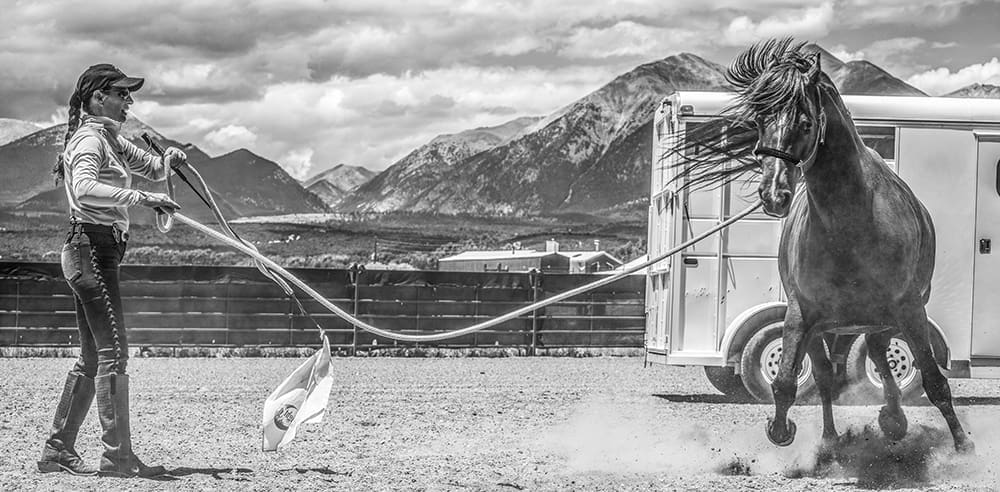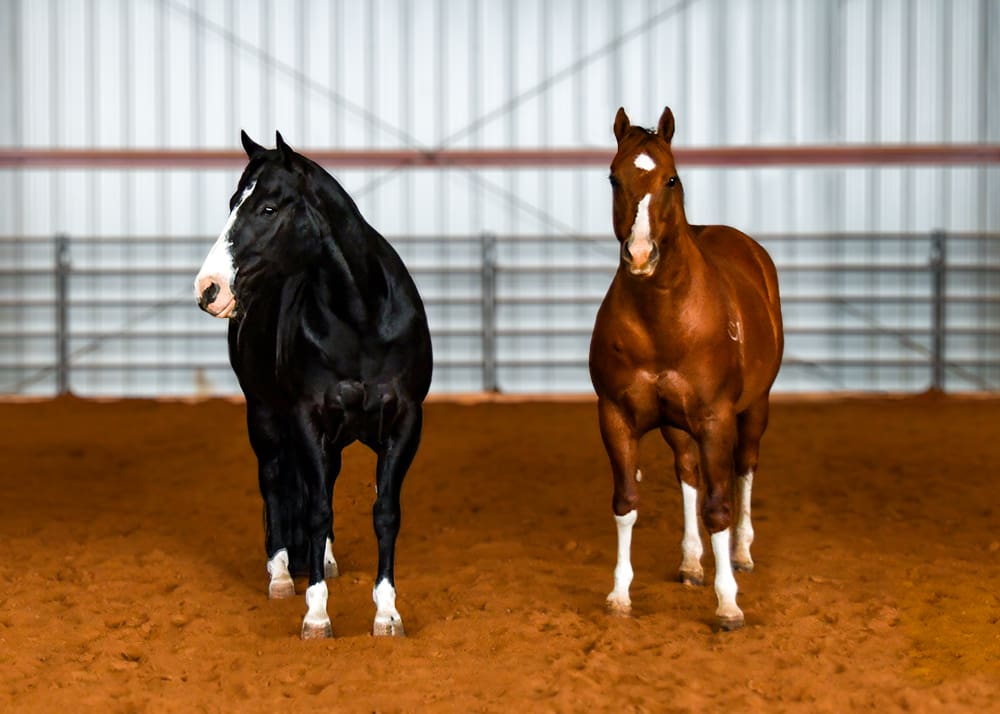
Manners and Skills
There are many ingredients that go into the making of an exceptional trail horse and just like in the kitchen, quality ingredients can make the difference in an average dish or an outstanding one. So, what are the ingredients we are looking for in a good trail horse?
Keep in mind that trail riding can be quite different, depending on the part of the country where you live or ride. For me, living in the high mountains of Colorado, trail riding typically involves terrain that is steep, rocky, and hazardous in places. Therefore we don’t take young horses, under the age of 4, into the high mountains. They need physical maturity, strength and coordination, and a considerable amount of training.
Here in the Rocky Mountains, natural obstacles can range from timber blow-downs to scary bogs to raging, rocky creeks with steep banks on both sides. On Pepperoni’s first ride in the high mountains, in the Sangre de Cristo Wilderness, one difficult water hazard had all those qualities in one crossing. Negotiating it safely meant having total control of the horse from stem to stern and a relationship based on trust and solid leadership.
To me, the ideal trail horse is safe and reliable in changing environments, is always mannerly and obedient, consistent in its behavior, well-trained, responsive, and experienced in a variety of settings. I want a horse that is brave and forward thinking, with a strong work ethic. But the age-old question is this: is a good (trail) horse born or made?
Nature vs. Nurture
A horse hits the ground with its instinctive behaviors almost fully formed and it’s born with its temperament—inherited in his genes. That baby horse has instinctive behaviors such as flight, locomotion, and suckling. He has a temperament that may prove him to be brave and bold, scared and flighty, or somewhere in-between. He may be curious and investigative or spooky and reactive; he may be calm and lazy or excitable and high-energy. He may be willing and eager-to-please, or dominant and challenging. Although training will always help, a horse is born with his temperament and there’s not much we can do about it.
There are only two types of behaviors in any animal (humans included): instinctive and learned (nature vs. nurture). Horses tend to operate a lot on instinctive behaviors, but they learn new behaviors wickedly fast (for better or for worse) and the learning starts the moment they are born.
In the making of an excellent trail horse, it’s best to start with the raw ingredients of good physical traits (conformation and gaits) and a great temperament (brave and willing). But we must also add to that, a lot of training, good handling, and varied life-experiences. There are certain basic skills that must be addressed through training, plus there are some foundational training philosophies that should be ingrained in the young horse throughout its training.
All of this requires a lot of time and dedication to your horse and to the sport—there’s no instant gratification in the making of a great trail horse.
Basic Handling Skills
I’m not a big believer in “training” young horses, under 2 years old. I think they need to grow up first and foals should learn to be horses first. It’s also important for baby horses not to learn bad habits (like moving into pressure or walking all over you), that often comes with over-handling at a young age. We like to start teaching certain skills to yearlings (like tying, lead-line manners and trailering) but we keep it light and allow the horses to mature—physically and mentally—before hard training begins. Saddle training the young horse goes quite fast when they are ready, and starting a horse too early generally leads to more problems than it solves.
While I may start teaching basic ground-handling skills on the horse as a yearling (lead, tie, trailer), the serious training will begin towards the end of its 2-year-old year. I like to start 2-year-olds under-saddle in the fall for simple basics. Then we get far more serious in the spring of their 3-year-old year. As a 3-year-old, he’ll get an abundance of training, as well as confidence-building experiences “on the road.” By the time that young horse turns 4, he’s mature, well-trained, and gotten the prerequisite experience he needs to be successful in the high mountains or on any trail ride.
The basic training on a trail horse is the same as I would give any young horse, as they are useful skills that make the horse safe and pleasant to be around. Most of these skills will be solidly trained into the horse before under-saddle training begins. Here’s a simple checklist of the handling skills that a young trail prospect should have:
- Leadline Manners: Leads well beside you, does not crowd you or get in front of you, rates his speed off yours, stands quietly when asked, can be led from ground or ponied from a horse.
- Ground Ties: When you ask the horse to stop and you drop the lead rope on the ground, he stands parked, as if he is a statue. This is a useful skill in any horse, but a must-have for trail horses.
- Stands Quietly While Tied: This requires many hours and days spent at the “patience post,” learning to stand quietly and patiently while tied. Eventually that horse will have to stand quietly tied to a trailer, and potentially tied overnight to a high line. A horse that does not tie well is a liability on the trail.
- Feet Handling: Proper manners here include lifting the foot when asked, holding it up without leaning or fidgeting and allowing me to place the foot back down on a particular spot (not jerking it out of my hands when I’m finished). Be particular about this. A good trail horse needs to allow you to have total control of his feet and body.
- Not Claustrophobic: Horses instinctively do not like tight places with no escape—some horses can be way more claustrophobic than others, and they may need major desensitizing. I want to make sure the horse will not rush through gates, tight spaces or scary places or have any kind of panic attack in confinement (like a trailer). It’s easy to get into tight binds on the trail and I need my horse to remain calm, continue to think and always wait for my cues.
- Trailering: This includes loading promptly, riding quietly on the road and unloading easily. These are skills I want to develop and engrain over time, so we take every opportunity we can to load young horses, let them eat meals in the trailer and go for short rides (this is also a way to get experience in new places).
- Desensitizing: The horse must accept touch all over his body, legs, face, mouth, ears, nostrils, tail, and private parts. The horse needs to accept fly spray, oral medications, bathing, and grooming.
While all of these skills may be quickly learned by the horse (with a good trainer), it will take weeks and months to ingrain these behaviors in the young horse, to the point these skills are “finished.” Taking your time, setting good precedents and having consistent handling will cause the young horse to blossom and it will set a solid foundation for his under-saddle training.
Next month, I’ll discuss the progression into under-saddle training to build a strong foundation for an exceptional trail horse. These skills are important no matter what discipline you choose, but when riding into uncontrolled and un-improved environments with natural hazards, these skills can be the difference between a fun and exciting ride and a total disaster.



